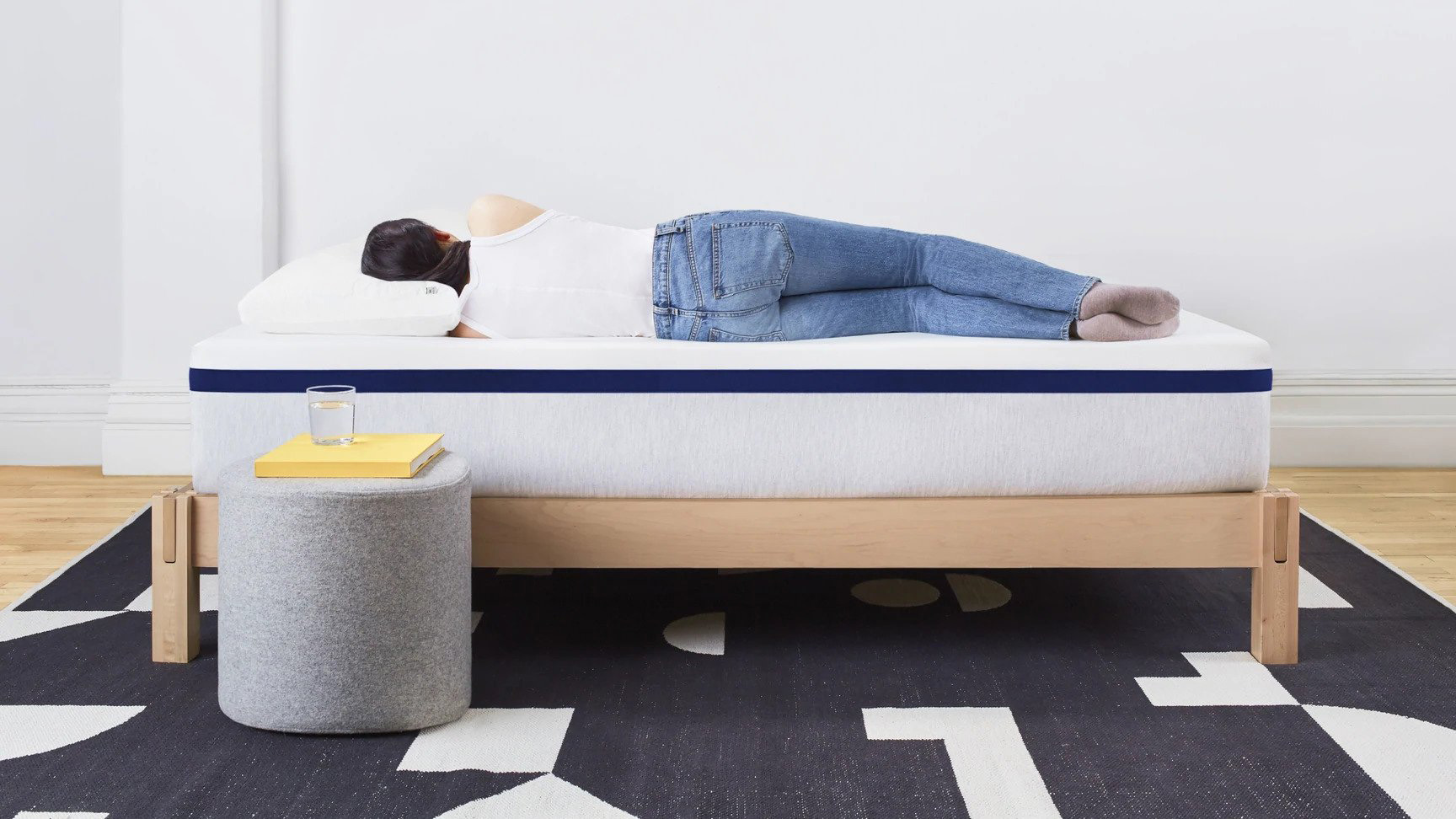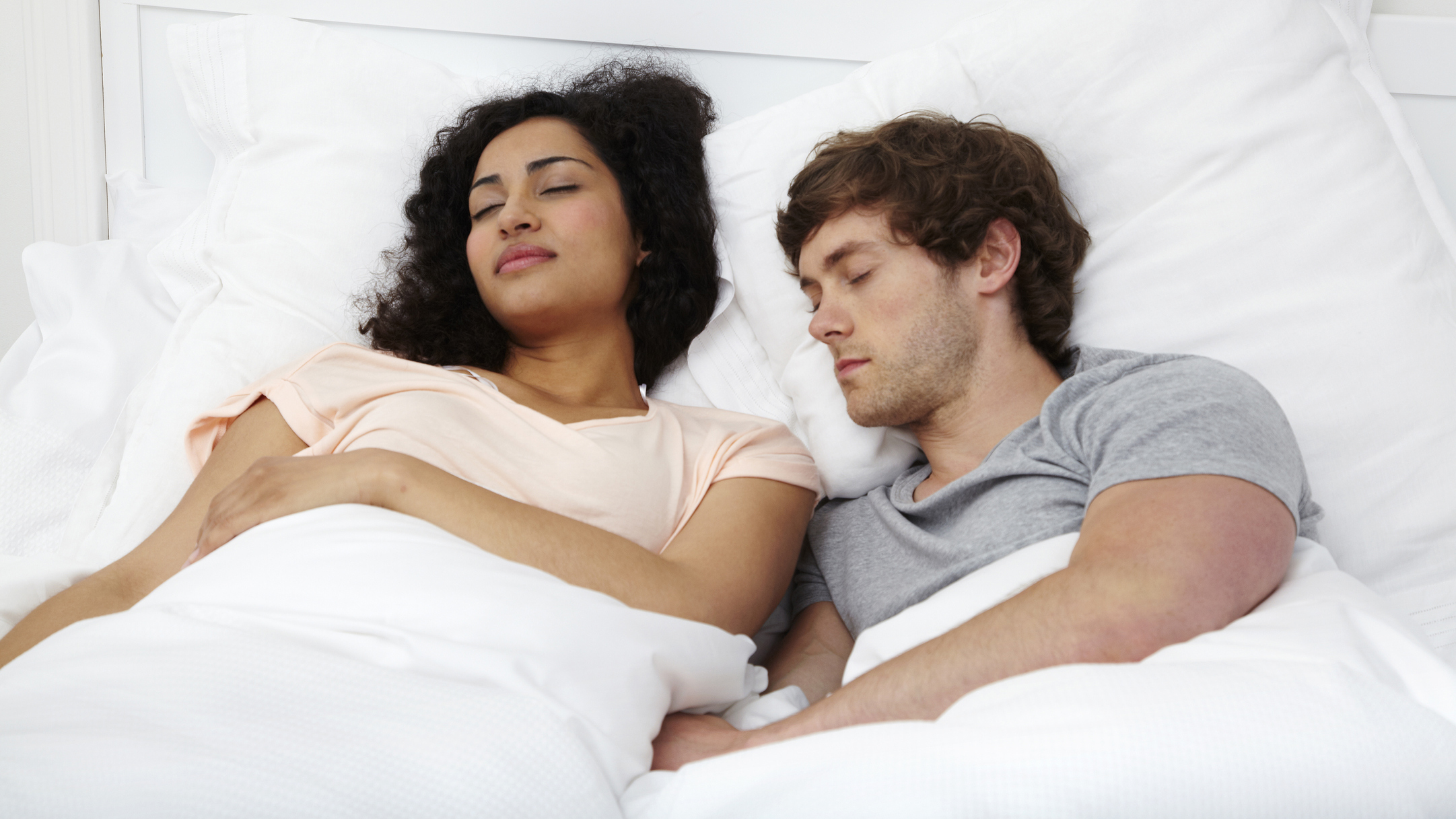Is sleeping on your side good for you?
We’ve all experienced periods of bad sleep, whether it’s down to stress, life changes or getting into bad habits. But your favored position could potentially affect the quality of your sleep, as well as your health during waking hours.
Nearly two-thirds of adults (opens in new tab) sleep on their left or right side. Curling up in a ball and falling into a deep sleep feels like one of the safest ways to get the 7 to 9 hours of sleep most adults need. But is sleeping on your side good for you? And does it matter which side you prefer?
We reached out to Guy Meadows (PhD), a sleep physiologist and the co-founder of Sleep School (opens in new tab), to uncover the pros and cons of side sleeping – and also learn the best position for most people to fall into at night.
What are the benefits of lying on your side?
Meet the Expert
Dr. Guy Meadows is a sleep physiologist, with a doctorate (PhD) from Imperial College, London. He’s also co-founder of the Sleep School, which has helped over 25,000 individuals recover from insomnia via natural means. For over 20 years, Dr. Meadows has dedicated himself to helping chronic insomnia sufferers and regularly attends, presents, and runs workshops.
There are many health benefits of side sleeping – which are mainly connected to the mouth and breathing.
If you suffer from snoring or sleep apnoea, it’s the best position for undisturbed sleep for you and your sleeping partner. “[Side sleeping is] very much recommended for heavy snoring or sleep apnoea sufferers because it’s a kind of positional therapy; it helps to keep the tongue out of the throat, which means your airways are clear for you to breathe better,” says Dr. Meadows.
For anyone that occasionally suffers from acid reflux, Dr. Meadows says sleeping on the left side is best, as research shows (opens in new tab). If you sleep on your right side and suffer from acid reflux or heartburn it can spill stomach acid into the lining of your oesophagus, creating that uncomfortable burning feeling.
“It’s better for digestion as our stomach is found on the left side,” says Dr. Meadows, “Studies have shown that reflux is worse when sleeping on the left side. Although digestion slows down when we sleep, this process continues to work throughout the night.”
What happens when you lie on your side?
Although laying on your side for sleep is great for snoring and acid reflux it won’t be as great for your back or spine alignment.
Dr. Meadows explains that sleeping on your side “can put pressure on the lower back. As it pushes the spine out of neutral alignments, and so that increases the chance of aches and pains in the morning.” This is the case especially if you hug your knees into your body as your spine is no longer elongated, as it would be in the daytime.

What if you find this the most comfortable position, but you start to get a bad back? “Popping a pillow between the knees is often a great way of just reducing the pressure on the lower back,” says Dr. Meadows, as it’ll reduce any stress on your spine and hips.
You’ll also want to make sure you’re sleeping on one of the best mattresses for side sleepers, which features support for your spine plus cushioning along your hips and shoulders for pressure relief.
Should you sleep on your side if you’re pregnant?
It’s recommended you sleep on your side if you’re pregnant – you’re likely to find it more comfortable, especially as your baby bump starts to grow.
When you sleep on your side it allows more blood flow directly to the baby. Research from separate studies – including this one in Sydney from 2015 (opens in new tab) – concluded that it was safer for women, especially in the third trimester, to sleep on their side. Women who sleep on their backs, especially during the third trimester, have an increased chance of having a stillbirth according to the research.
The best position is your chosen side, with your legs bent, but does it matter which side?
According to Dr. Meadows: “Research around pregnancy shows that sleeping on your left side increases the blood flow from the mother to the baby, although, interestingly, a review (opens in new tab) came out in 2019 and they analysed all the data, and found no difference between both sides. So, it really is down to preference.”
Why do some of us lie in the foetal position?
Sleeping on your side, in the foetal position, as we did in the womb, is a popular position – especially among people with insomnia. Dr. Meadows says this has to do with safety:
“People like to be tucked up in a ball – probably because there’s that sense of sort of safety or security. Our ability to be aware of what is going on is fundamental to our survival.”
“We know that there are many reasons why insomnia keeps people awake – and one is that they’ve learned to associate the night with danger. So, there’s definitely that sort of connection to being in a foetal position in the womb.”

What’s the best position to sleep in?
Sleeping on your side can be bad for your lower back but it can help those with acid reflux or even more serious conditions such as sleep apnoea. However, if you don’t suffer from any of these problems sleeping on your back is the healthiest position for your overall health and spine.
Sleeping on your back, which some do find uncomfortable, will keep your spine in alignment and give you the most restful sleep. Sleeping on your front is reported to be the least healthy position as over time, it’ll create a natural curve in your back. For most of us, the most amount of weight is found in our stomachs.
However, Dr. Meadows says that comfort is always key. “Unless there’s some overriding medical condition, I would opt for sleeping in the position which you find most comfortable.”
It’s crucial to sleep on the best mattress for your preferred sleep style, as that’ll ensure you’ll get the support and pressure relief you need in the right places. Alternatively, you can pick up a mattress topper to make your current bed as comfortable as you need it.
Finding the best pillow for your dominant sleep position is also key to a good night’s sleep. You can perform this simple test to find out if you’re sleeping on the wrong pillow.


